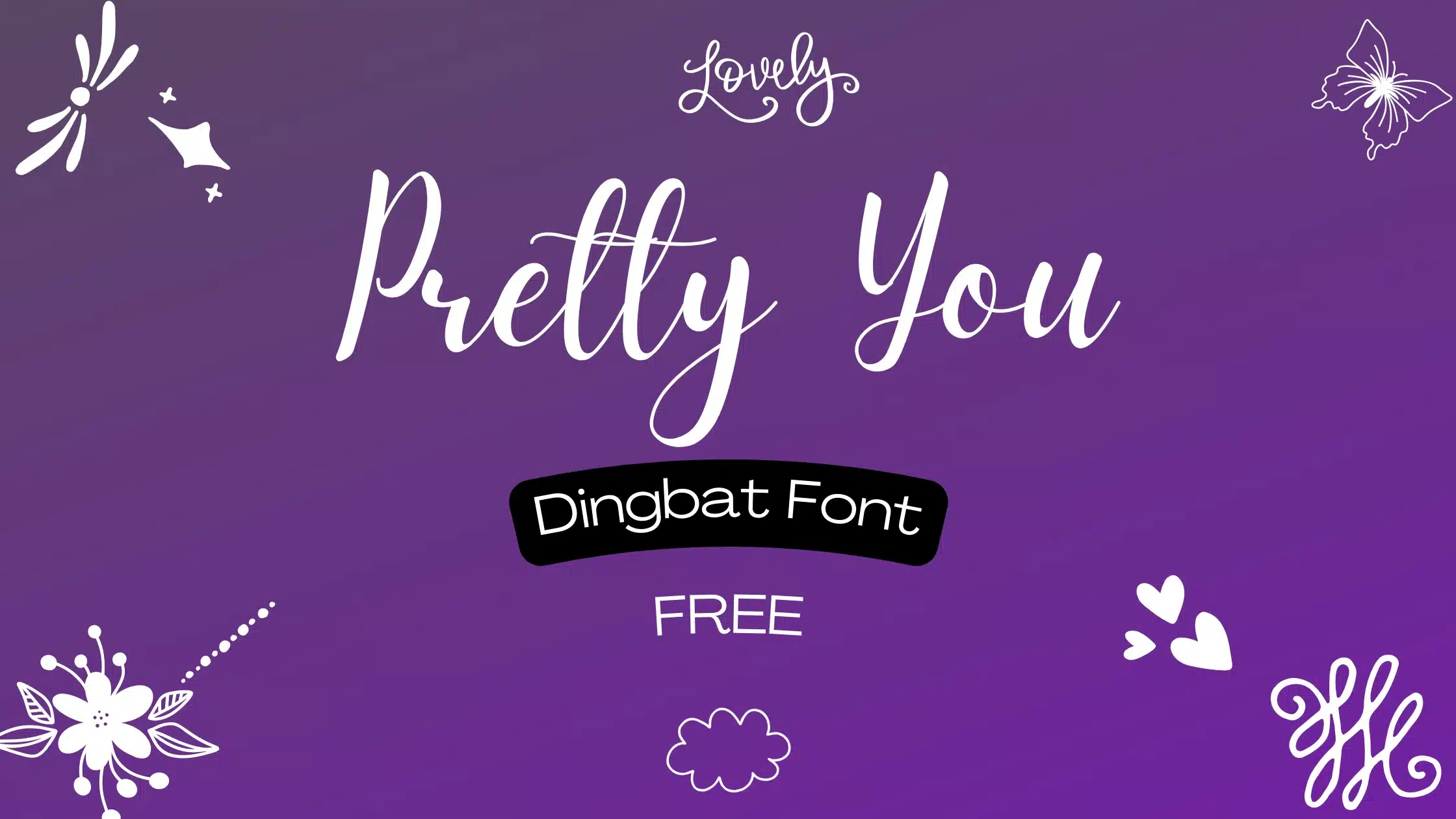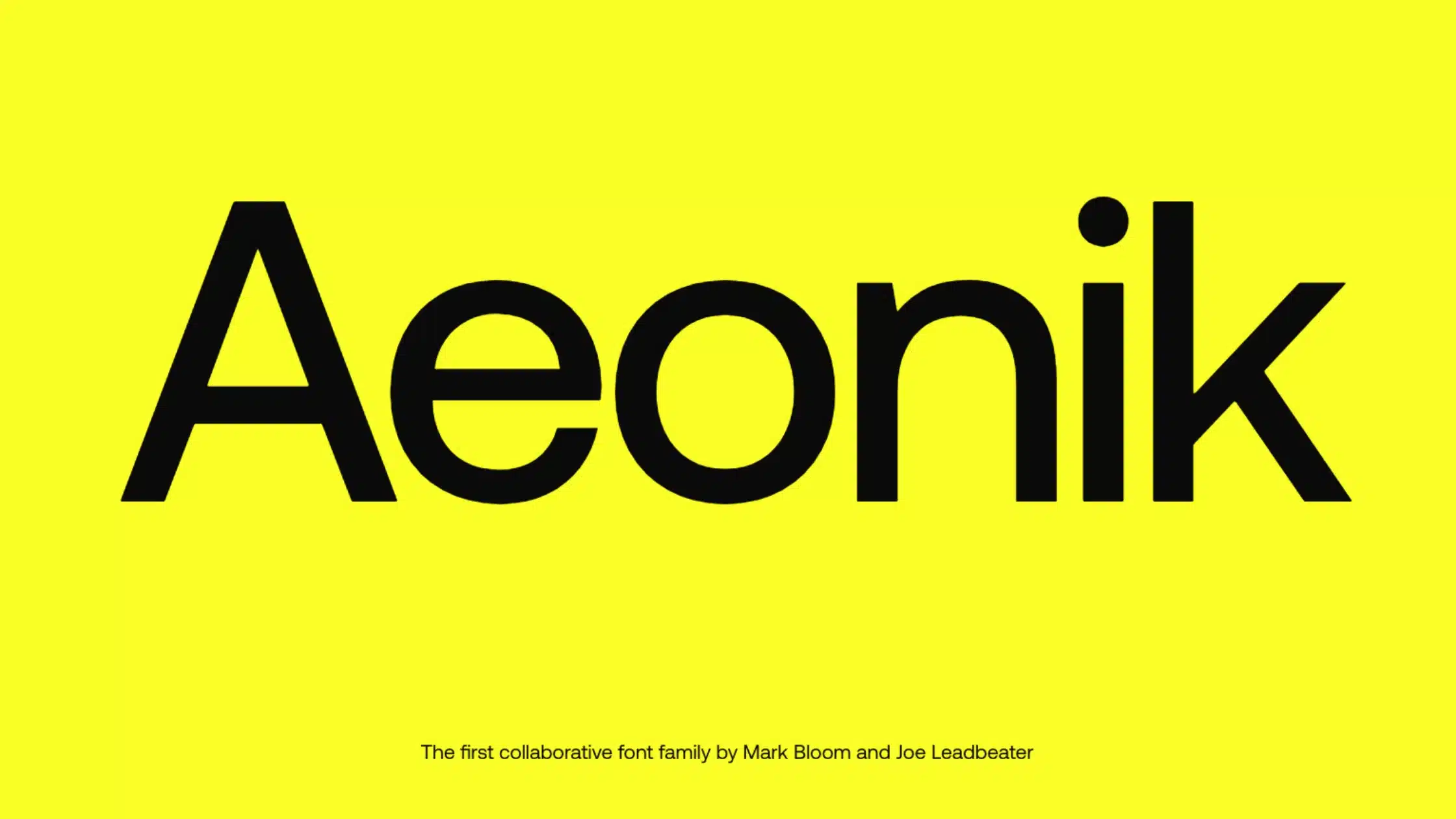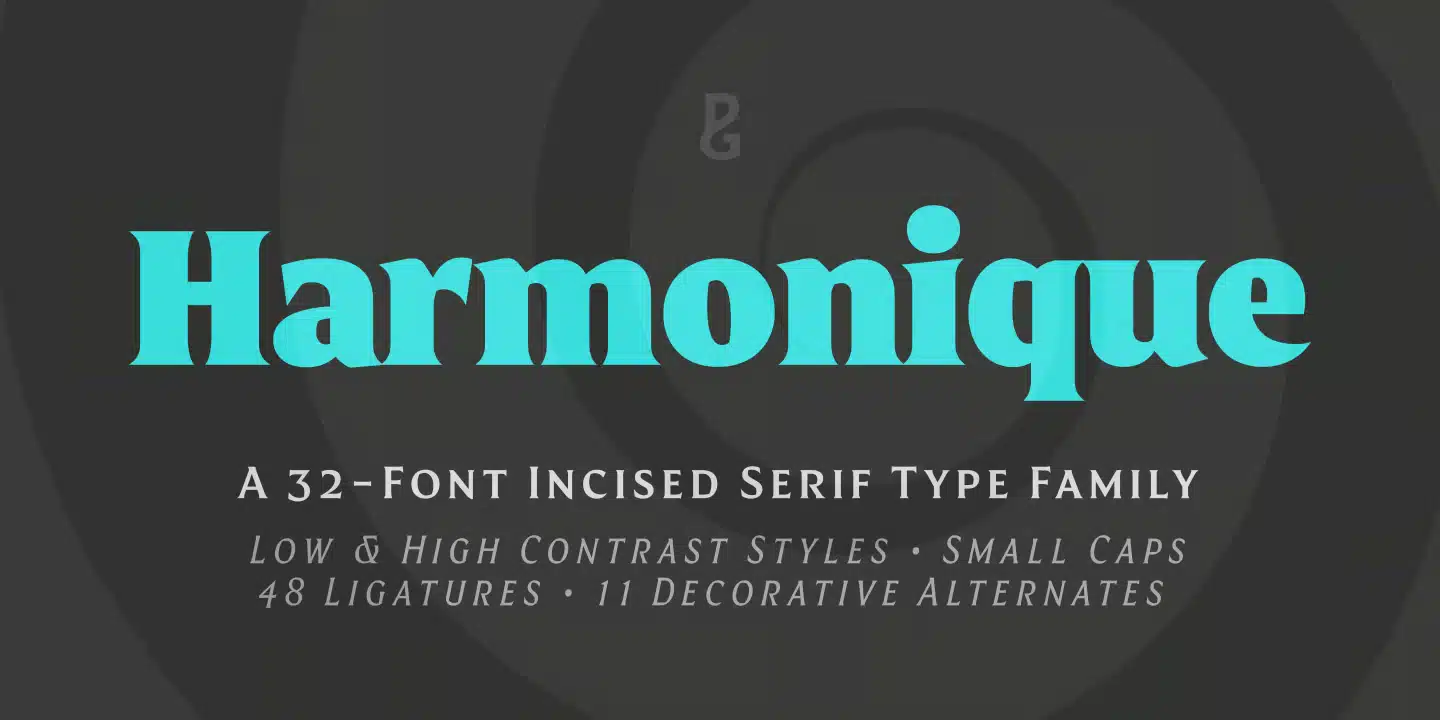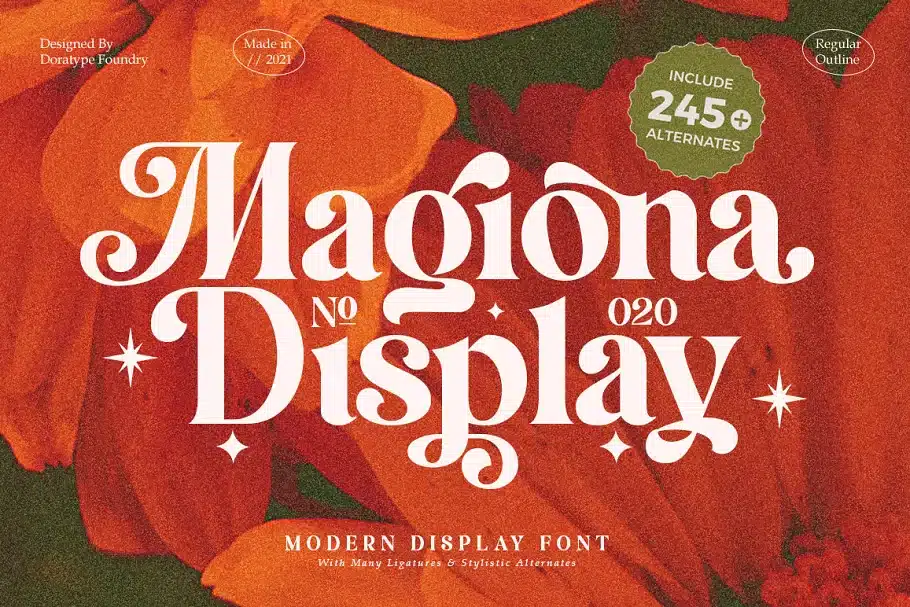Display fonts are a specialized category of fonts meant for large sizes where readability and immediate visual impact are important in equal measure. Their characteristic, highly expressive designs serve this purpose.
Now that you know what a display font is, let’s dive deeper into more details about display fonts.
Main characteristics of display fonts
- More creative, stylized, and decorative designs.
- Bolder and thicker strokes.
- May have varying stroke widths and unusual shapes.
- Often have a lot of personality and flair.
- Meant to grab attention as display text.
Display fonts throw boring body text conventions out the window. They’re all about getting creative, stylish, and downright decorative with letterforms. I am talking bolder, thicker strokes that grab attention. These fonts have varying stroke widths with unusual shapes that show some flair.
While a standard body text font needs to fade into the background for readability, display fonts are meant to do just the opposite—they demand to be looked at. So designers go to town, giving display typefaces an over-the-top personality. These fonts are born to be seen as significant and used to showcase headings, titles, posters, etc. They add a bold accent when used sparingly in body copy, too.
The point is that display fonts are courageous. They dare to impress with thicker, more creative strokes and letterforms that break the mold. So feel free to get adventurous and give your headings a font that proudly preens for attention.
Tips for pairing display and body fonts
- Complementary personalities and styles.
- Similar time periods or design eras.
- Contrasting weights and widths.
When matching display and body fonts, go for complementary personalities—pair a script display font with a more stern serif body font, for example. Or match fancy with simple.
Display and body font duos work best from similar eras or design styles. An art nouveau display font will sing with an old-style body font—keep centuries and sensibilities in sync.
Feel free to get adventurous with contrasts, though! Pair a sturdy, bold display face with delicate, thin body text. Or go with wildly different weights and widths—it creates visual excitement.
The concept is that display and body fonts work in harmony, not because they’re uniform but because they balance each other. Complement, align eras, and contrast for typographic bliss. Take some risks and discover unlikely font pairs that sing!
Pros and Cons of Display Fonts
The Pros:
- Eye-catching – Display fonts command attention with their large size and vivid styles. They’re perfect for making key text stand out.
- Expressive – With intricate detailing, creative shapes and ample space, display fonts allow more room for personal expression.
- Sets the tone – From elegant scripts to rugged slab serifs, display fonts set the visual tone for any design.
The Cons:
- Legibility suffers – Intricate shapes and condensed spacing reduce clarity at small sizes. Display fonts work best when large.
- Overpowering – Used too much, a display font can dwarf surrounding text and feel overwhelming. Best used sparingly.
- Restrictive – Most display fonts only come in bold weights, limiting flexibility. Regular, italic and alternate fonts may be lacking.
So in summary – display fonts make a bold visual statement and add flair to any project. But restrain them or risk legibility and design issues. Use their drama judiciously!
Key Differences Between Display Fonts and Other Typography Categories
Let’s find out how display fonts differ from other font categories. This will help you easily identify them.
Serif vs. Display Fonts
Small lines characterize serif fonts or flourish at the ends of the strokes that make up each letter. They appear more traditional and formal, so they are commonly used for body text in print materials like books and newspapers.
Display fonts, on the other hand, typically have a more playful, decorative style. They are used to draw attention to specific parts of a design.
Sans Serif vs Display Fonts
Sans serif letters do not have the small lines at the stroke ends that serif fonts do. They come across as cleaner and more modern, making them well-suited for digital use cases like websites and mobile apps.
Some display fonts may be sans serif, but they tend to be more stylized and decorative than standard sans serifs, or at least notably bolder.
Script vs. Display Fonts
Script fonts mimic cursive handwriting, often lending a personal touch to formal invitations, greeting cards, and similar designs.
Display fonts can also be highly decorative and stylized, but they are usually less cursive and more geometric than true script fonts. Sometimes, a font can fall into both categories, like brush scripts.
Monospace vs. Display Fonts
Monospace fonts feature characters occupying the same amount of horizontal space, regardless of their width. This makes them useful for programming and other applications where aligning text is essential.
Display fonts are typically not designed for legibility at small sizes or situational alignment needs. Their priority is visual impact.
In summary, display fonts are versatile for creating different moods and styles in design projects. While they are more decorative and stylized than other font types, some faces can fall under multiple categories like display and script. Their defining trait is the ability to grab attention.
Final Words
In closing, display fonts are versatile tools that should be wielded with strategy and care. Their visual impact gives them influence over the viewer. And with great influence comes great responsibility to communicate effectively. So use them wisely as you give voice and style to your messages.
The key is finding the right balance between form and function—delighting the senses while delivering content that informs, inspires, and serves your audience. Where display fonts shine is adding an element of surprise that intrigues viewers to dig deeper. So unleash them for good!
What is the easiest way to install this font on my device?
There’s no reason to be worried. Please follow our directions.
You may also find out more about typography and how it is classified from here.
Please do not hesitate to contact me if you have any questions. Thank you very much!









Leave a Reply